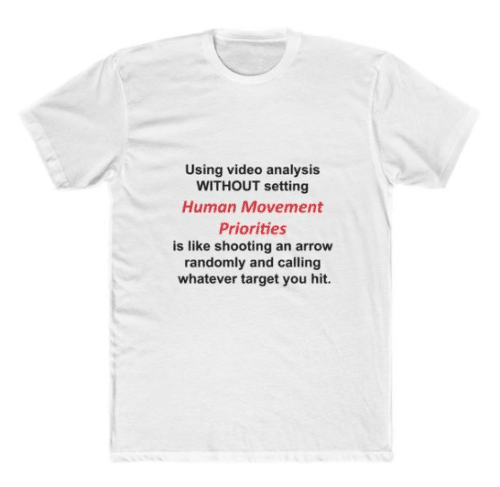How To Adopt These 12 Timing Gems & Get Hitters On-Time More Often In Games
Timing Question Answered About How To Get Kids Consistently On Time In Games
This week I want to share a question that Keith Soldra, one of my coaches, had for me in a recent survey. Keith is a private hitting instructor who teaches both baseball and softball hitters. Take it away Coach…
“How to get kids consistently on time in games. Most are consistent in a lesson/practice but are struggling to transition that to game ABs. I’ve used the two plate drill, a check swing drill, varying speeds in front toss, throwing live from different distances, the pitching machine, wiffle balls, etc…. I’ve even suggested having their eyes checked. LOL. Still in games they tend to get anxious and everything they’ve learned goes out the window. Any advice would be greatly appreciated. Keep up the great work Coach!!!”
Fantastic feedback Coach. You’ve definitely been doing more about this than most, who don’t believe timing can be taught by the way! Let’s first breakdown how to transition practice swings into game ones…
Whenever there’s a hitting challenge that pops up, whether it’s mechanical or mental, I go to the principles.
PLEASE NOTE: principles are guidelines, then it’s important to channel your inner creativity to solve the problem. Not using principles is like the following statement:
“Using video analysis WITHOUT setting human movement priorities is like shooting an arrow randomly and calling whatever target you hit.”
I’m a private instructor too, and here are some thing that may be jamming the signal (that I hear from my own players and parents) you’re giving to your hitters because it sounds like you’re pulling the right strings:
- Coaches not reinforcing what you’re teaching,
- Coaches using bad cues like “get your front foot down early”, and
- Players NOT getting their 4 to 5 hitting homework days in on their own at home…
Unfortunately the instructor cannot control any of these. We can influence, but not control. But let’s assume the opposite of the above points is true…
What is a Coach or Instructor to do About Transitioning Timing, Mechanics, Mental Processes (Approach), etc. into Games?
Here are 12 critical points I’d start with…
- What ARE the Sticky Coaching principles that would help solve transitioning practice into games? Answer? 8 Scientific Principles of Successful Learning
- Here’s Why Coaches SHOULD NOT Engage in Block Practice…and MUST “Train Ugly” – this is a BIG one! “Random” Practice is more challenging, will make more mistakes, will be uglier, better for us, prepares us better for game situations.
- In this video post, we discuss: over-coaching OR giving instruction during games, promoting focused quality OR unfocused quantity swings at practices, and training timing, plate discipline, and pitch recognition.
- The Ugly Truth About Video Gaming, What It Means To The Youth Hitting Industry, & How To Fix… – this post will help coaches aid players and parents on practicing their hitting “homework” at home
- Discover Science of Successful Learning Secret To Fix Lunging (or any swing flaw for that matter!) – in this post we discuss: reader question about lunging, talk about “Bean Bag” study from Make It Stick
book, WHY we separate PROCESS from PERFORMANCE with hitters learning something new, takes time to change ineffective movement momentum into effective, and training 4-5 days per week, for AT LEAST 5-mins each day.
- How To Train 2-Year-Old To Hit A Moving Ball – in this post we’ll discuss: What science of learning says, and regression to progression models for teaching.
- Here’s a glimpse of how I teach a one-on-one lesson: https://hittingperformancelab.com/dramatically-cut-hitters-learning-curve-in-half/
- How You Can Teach Effective Hitting Mechanics Almost Instantly – in this post we’ll breakdown: Mechanical steps to focus on first – scratch the itch, breaking down drill progressions, mindset when working on something new, transitioning practice into game swings, and player’s homework for home.
- How To Turn No Improvement Into Outstanding Results – in this post we’ll talk about: Improvement depends on these 5 things, AND How many swings are too much & not enough?
- 17 Little Known Ways to Optimize Learning at Home – I’ve done a tremendous amount of research and study into the science of successful learning since 2013, and wanted to share 17 quick down-and-dirty tips with you.
- What Every Coach Must Know About Giving Feedback To Hitters – this is a fantastic self evaluation post answering the following three questions: Do you give verbal feedback between each swing? OR, wait till the end of a round? 2. Do you use internal cues like a focus on the feet? OR, focus on external ones outside the feet? 3. Do you physically move the player into a better position yourself?
- How-To Make Changes & Get Results Faster Coaching Baseball – in this post we’ll talk about:of “massed practice” to long-term learning, fine art of variance as a teaching tool, and how to infuse variance into hitting practices.
Ultimately, my favorite sticky learning principle for timing is variance…also known as random training, training ugly, or chaos training. We use much of what Coach Keith has done:
- 2 or 3-plate drill (hitter switches plates set at different distances for a specified amount of swings),
- Random pitches drill (mixing curveballs and fastballs – approach based),
- We pick different pitch zone locations to hunt (up/down/in/out),
- We hit using different bat sizes, weights, end loaded/balanced, skinny diameter (stick), short/long, etc.
- We hit different ball sizes, weights, and colors, and
- We started using the ‘showing numbers’ technique as a trigger for the turn, timing it according to different pitching tempo (i.e. windup v. slide step).
I tell my hitters that hitting MUST be harder in the cage than it is on the field. Use that frustration experienced to grow using a combination of these elements. Get comfortable being uncomfortable.
- Top Rated Online Softball Hitting Coaching: Improve Your Batting Average with Personalized Lessons - July 23, 2024
- Transform Your Coaching: Buy the Best Youth Baseball & Softball Culture Book for Effective Team Success - July 16, 2024
- Master Your Swing: How to Choose the Best Baseball Hitting Training Videos for Immediate Skill Boost - February 28, 2024





Leave a Reply
Want to join the discussion?Feel free to contribute!